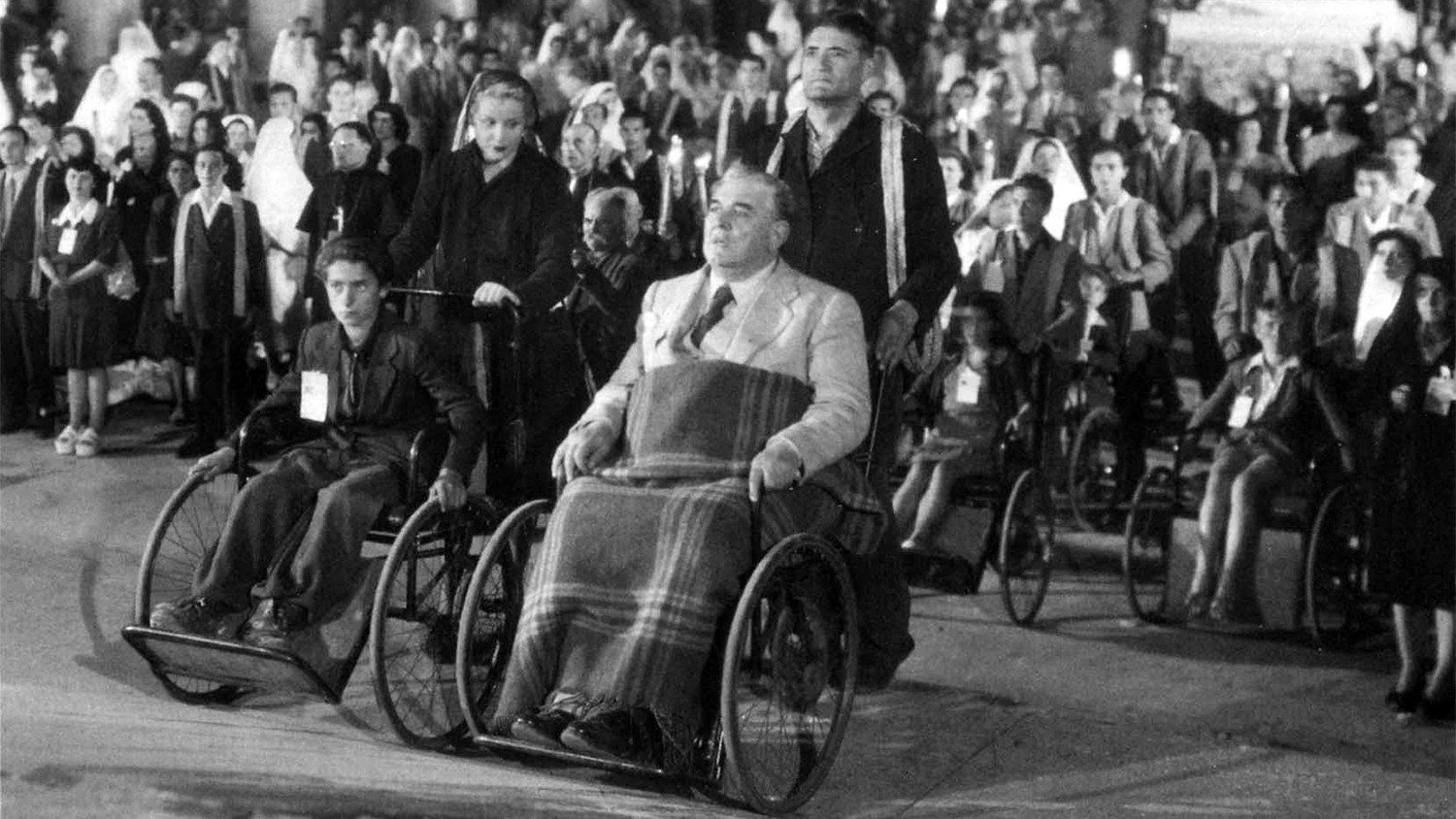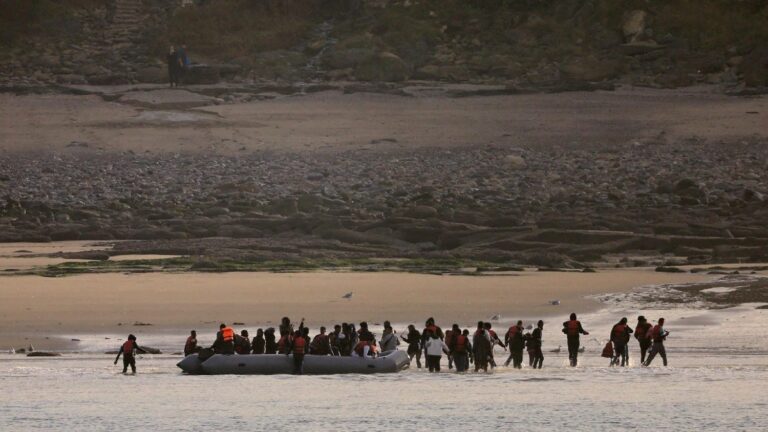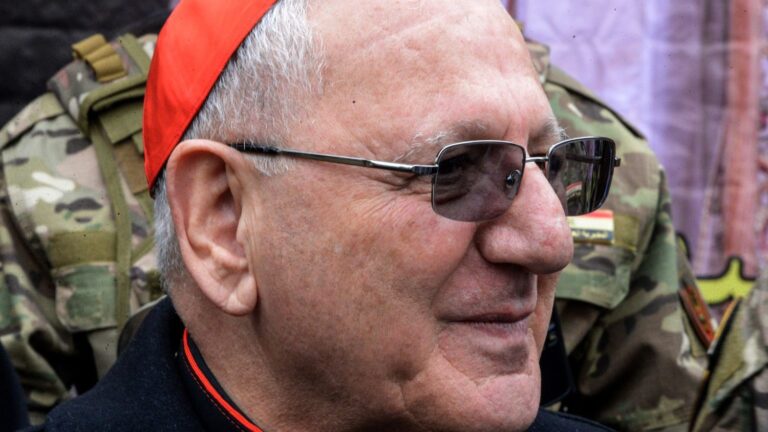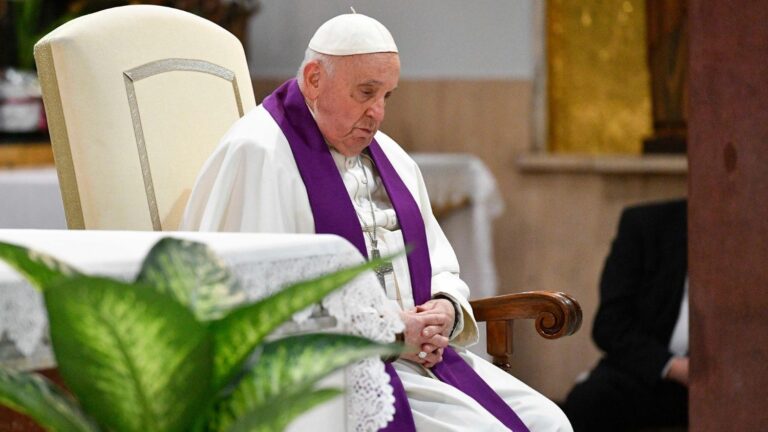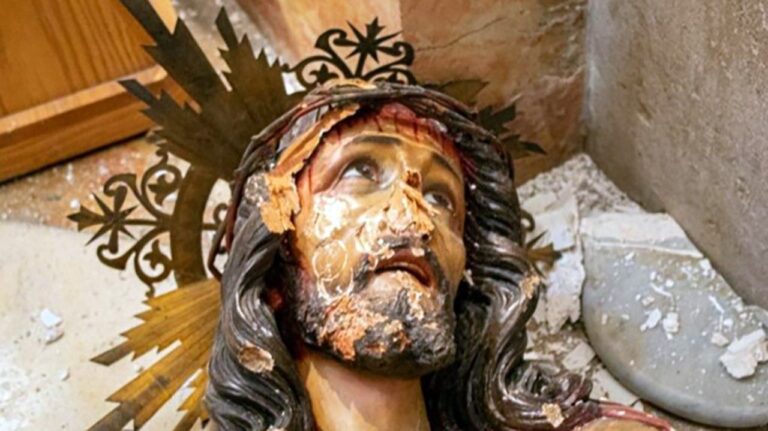Jubilee films for Pilgrims of Hope: The Gate of Heaven
The first film chosen by Vatican official and cinema expert, Archbishop Dario Viganò, for the “Jubilee is Culture” initiative of the Dicastery of Evangelization, is “La Porta del Cielo” (The Gate of Heaven) by Vittorio From Sica, from 1945. Father Greg Apparcel, CSP, film critic, associate priest of the American Catholic parish of St. Patrick in Rome and attorney general of the Paulist Fathers to the Holy See, brings us his vision of the film.
By Fr. Greg Apparel, CSP
“La Porta del Cielo” (The Gate of Heaven) is a story of hope filmed by Vittorio De Sica in 1943-44 during the Nazi occupation of Rome and released in 1945. It was made with the support of the Holy See . See what allowed De Sica to film the final scenes in the Basilica of Saint Paul Outside the Walls. The film tells the story of a pilgrimage of sick people aboard a special train to the Marian shrine of Loreto. They each suffer in one way or another; some sick; some are disabled, some veterans, some suffer from mental anguish. They want to be healed and hope that at the end of their journey, they will be.
It is said that there were elements of salvation in the production itself. Gleaning information from Azione Cattolica Italiana and other websites, I learned that De Sica had hired hundreds, if not thousands, of actors, some of whom were Jewish or otherwise persecuted by the Nazis because they were “different”. He said that “. . . it was salvation for me and for the actors. Apparently, De Sico dragged out the film as long as he could, hoping that the Allies would soon liberate the city. Mgr. Giovanni Battista Montini, who would become Pope Paul VI and who was then deputy of the Secretariat of State, also participated in the making of this film. One of the screenwriters, Cesare Zavattini, wrote in his diary: “They would like me to (make) my own film, leaving me completely free. I say totally, but the requirement is that the film be based on Christian morality. But who is not a Christian? Christ is at the door.
De Sica notes that “at one point, St. Paul’s Basilica was a besieged fortress with three thousand refugees inside. And it was a refuge for all of us in every sense of the word. For example, one day bombs fell all around the church and we all remained unharmed inside. » He had transformed the basilica into the sanctuary of Loreto (which is actually near Ancona) and also used the basement of the church of San Roberto Bellarmino in Parioli, a district of Rome.
Before talking about the characters in this journey, I must admit that I was only able to find a version of this film with Spanish subtitles on YouTube. My command of Italian is not perfect and my Spanish is much less, so I hope I haven’t missed any salient points or dialogue. What struck me strongly was why this film was chosen as an anticipatory reflection on the Jubilee of Hope and what it means to have faith in life’s most difficult situations.
As the train heads towards its destination, we meet some of the passengers and see them reflect on the situations that brought them to this point. We meet Claudio, a young boy in a wheelchair running away from his quarrelsome parents who mostly ignore and abuse him. He seeks healing with the help of a good neighbor named Maria. We look at an elderly woman, Filomina, dressed in black and suffering because of her son’s estrangement from her three sons who are angry and mourning their recently deceased mother. When the father slaps his eldest son for accusing him of not caring for his mother, it upsets Filomina so much that she seeks the healing love of Our Lady of Loreto for her family.
Next to Filomina sits a very troubled man, with a paralyzed right hand. Somehow he doesn’t have the necessary papers to board this train, so a kind nurse tries to help him. His supervisor tells him that he has to get off at the next stop because “the rules are the rules”, but the nurse finds a way to help the man. His name is Giovanni and he is a renowned concert pianist, who no longer knows how to play. He was given x-rays and various treatments, but there was no cure. He goes to see his parents who proudly call him Il Maestro. His mother sees that he is ill but says that it will pass in time for his concert in Milan. He tells her that the concert will never take place because he is ill and no longer has the use of his right hand. Later, he looks at his piano while listening to the loud ticking of the clock. He dusts the piano and tries to play it again, but he can’t and just sits there and cries. The scene dissolves as he is back on the train, now in the present, as a sleeping Filomina rests her head on his shoulder.
In Rome, more and more patients are waiting to be taken on the train. A blind man and a friend also board. A woman lying on her sickbed looks out the train window towards the next train. It’s a dining car and a man is about to take a bite of his juicy steak. He feels uncomfortable and guilty as she watches him and finally, he pulls down the shade and continues his meal. Perhaps he is an example of those in our world who ignore the suffering of others.
There are other stories, including that of Carlo, a jealous man, who humiliates his rival in front of the woman he loves. The rival then takes revenge by rigging a machine and Carlo is seriously burned.
So we see all the passengers suffering in various ways. They wait patiently, fully aware of those around them. They pray the rosary in each wagon and then arrive in Loreto. They look at the shrine with great hope. Inside, a priest carries the monstrance with the Blessed Sacrament in procession. The church (San Paolo) is filled with many lit candles and a multitude of people praying. “Jesus, Savior of the world who has come down among us, help me. » The pianist and Filomena walk together. A boys’ choir sings. “Lord, walk with us,” is a prayer. Even the cynics are moved.
Then, a woman in a wheelchair gets up and starts walking. She offers her crutches and walks slowly, followed by a group of nurses dressed in white. All the main characters, even Giovanni the pianist, walk together with hope and faith. They kneel and pray. “I believe,” they say. “Thank you, Lord.” Giovanni doesn’t kneel, not yet. He walks to the side alley and places the gun he brought with him with the possibility of suicide on a table. He now kneels with tears in his eyes and makes the sign of the cross.
Watching the healed woman walking around the church, people shout, “One of us has been healed!” » They are pilgrims of hope and they have been raised. They say, “Thank you, Lord. One of us was healed.
One day I will see this movie with good English subtitles (or with a better understanding of Italian) and I will understand everything I may have missed. However, what I did not miss were the intense feelings of those suffering people who traveled with hope on the special white train to Loreto, and although they were not all physically healed, they were all spiritually healed.
